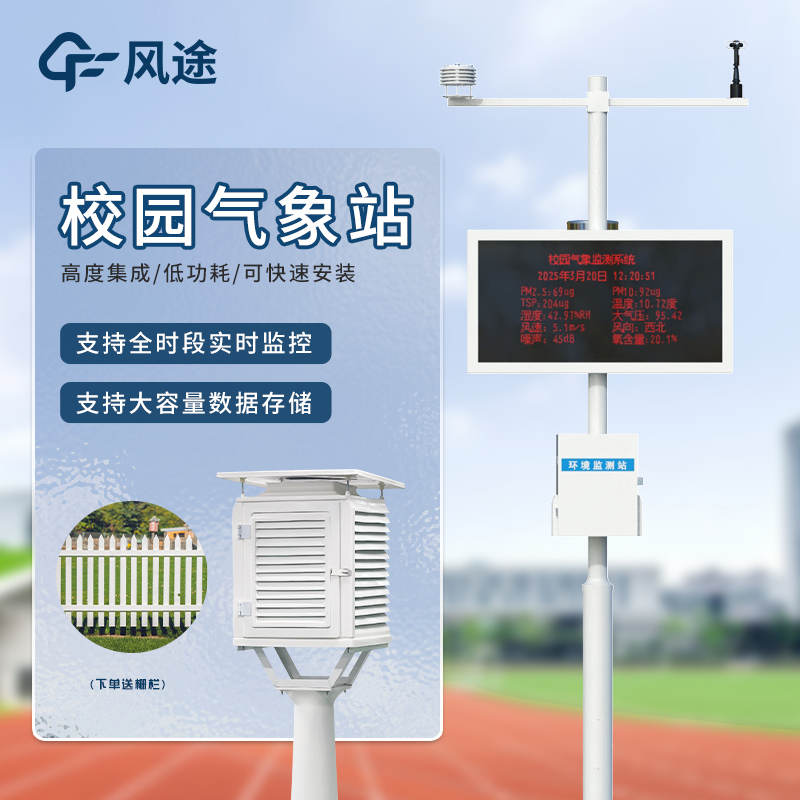Meteorological environment monitoring equipment supplier
Insist on doing high-precision customer favorite technology products
On campus, small automatic weather stations have become important facilities for meteorological monitoring, education, and scientific research. They consist of multiple key components, with meteorological sensors serving as the core to measure various meteorological elements.
Temperature sensors can monitor real-time temperature changes on campus.
Humidity sensors measure air humidity levels.
Barometric pressure sensors are used to monitor fluctuations in atmospheric pressure.
Wind speed and direction sensors determine the magnitude and direction of wind.
Precipitation sensors promptly detect rainfall.
PM2.5 sensors monitor air quality.
Solar radiation sensors record the intensity of solar radiation.
These sensors transmit collected analog signals to a data logger, which converts them into digital signals for storage. Meanwhile, the data logger relies on the campus network to transmit data to a server, allowing teachers and students to easily access it via the campus website or mobile applications.
Key Features:
Highly integrated: Enables simultaneous monitoring of multiple elements and multifunctional integrated operations, effectively improving work efficiency.
Low power consumption: Capable of long-term stable operation without mains power supply, aligning with environmental protection concepts.
Easy installation: Requires no complex engineering and can be quickly installed by one person, allowing flexible deployment across campus.
User-friendly operation: Features an intuitive interface, requiring no professional training for users to get started easily.
Stable and reliable operation: High-quality components and strict quality testing ensure data accuracy and continuity in harsh environments.
Strong scalability: Supports access to various sensors and extended functions, and can seamlessly integrate with the campus network for data sharing and remote monitoring.
Applications:
Education: Provides a practical platform for disciplines such as meteorology and geography. Students can deepen their understanding of knowledge and enhance scientific literacy and practical abilities by observing and analyzing data. It also assists teachers in improving teaching methods and enriches scientific education resources.
Scientific research: Offers accurate data for research in multiple fields, promoting scientific and technological innovation on campus.
Campus environmental management: Monitors real-time meteorological conditions, providing a basis for greening irrigation, indoor environmental regulation, etc. This improves resource utilization efficiency, enhances the campus's ability to respond to severe weather, and ensures the safety of teachers and students and the normal operation of the campus.
